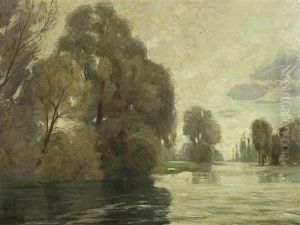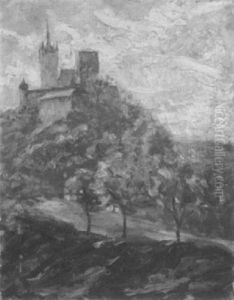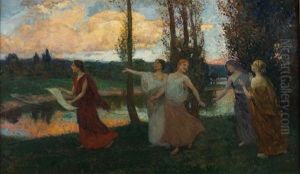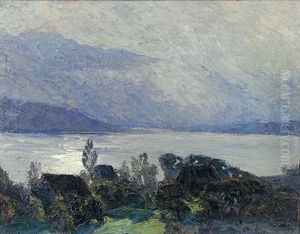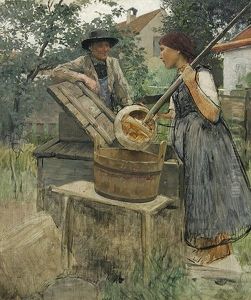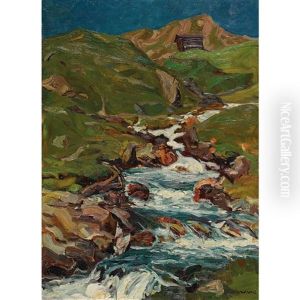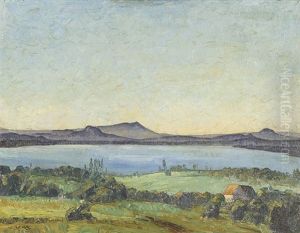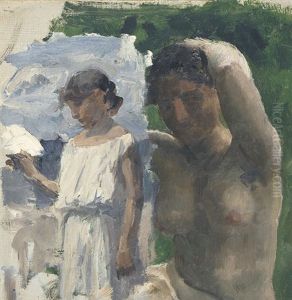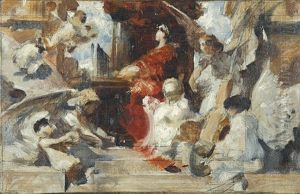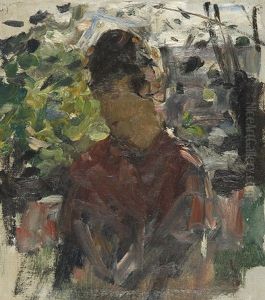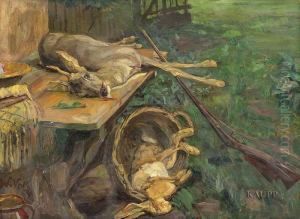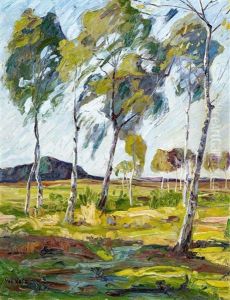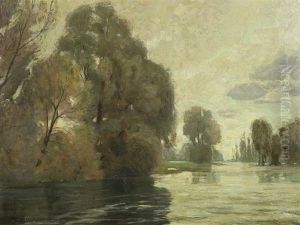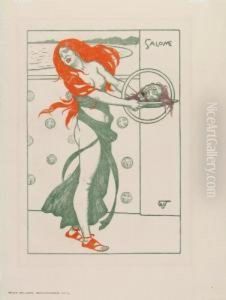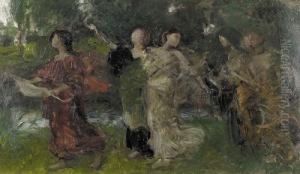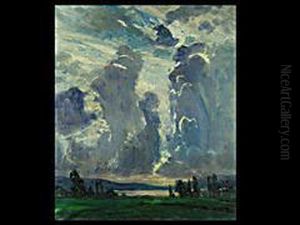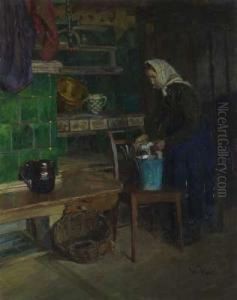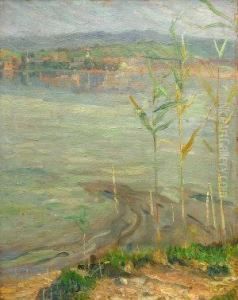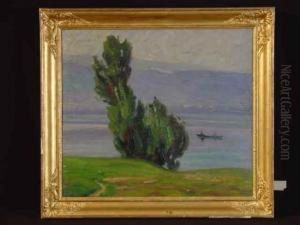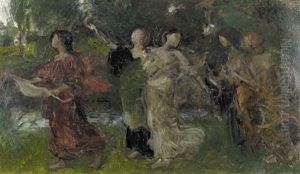Wilhelm Volz Paintings
Wilhelm Volz was a German artist born on April 13, 1855, in Pforzheim, Germany. He was known for his work in genre painting, focusing on domestic and rural scenes often characterized by a sense of tranquility and traditionalism. Volz's work is reflective of the style prevalent during the late 19th century in Germany, where there was a focus on realism and the depiction of everyday life.
Volz studied art at the Karlsruhe Academy, where he was a pupil of Ferdinand Keller, a notable German painter of the time. Under Keller's guidance, Volz honed his technical skills and developed a keen eye for detail. His education at the academy grounded him in the principles of academic art, which emphasized the importance of drawing and the study of the human figure.
After completing his studies, Wilhelm Volz embarked on a career as a professional artist. He exhibited his work at various shows and became quite successful, receiving accolades for his ability to capture the essence of rural life. His paintings often depicted the German countryside, farmhouses, and peasants engaged in daily activities, conveying a sense of nostalgia and a connection to the land. Volz's work resonated with the public and art critics alike, as it provided a visual counterpoint to the rapid industrialization and urbanization occurring in Germany at the time.
Despite his success, Wilhelm Volz's life and career were relatively short. He died on May 31, 1901, in Baden-Baden, at the age of 46. While his career was brief, his contribution to the German art scene of the late 19th century remains significant. His paintings continue to be appreciated for their warmth, attention to detail, and the painter's sensitivity to the simple, yet profound, aspects of everyday life.
